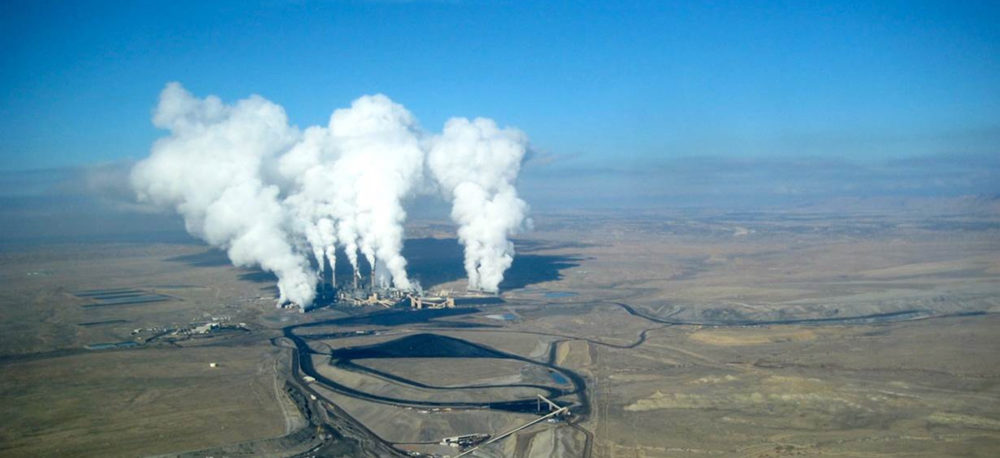Late last month, the Public Service Company of New Mexico (PNM) issued a landmark finding. After conducting a routine assessment of future power supply scenarios, the utility made an anything-but-routine conclusion: the best version of its future self, PNM declared, was entirely coal-free.
For a utility that’s been powering its customers with coal for half a century—and which has aggressively defended its need for coal to regulators as recently as a year ago—the finding marks a major step in the right direction, and should be celebrated for the gains it promises New Mexicans in the areas of public health, affordability, and the environment.
Still, there’s more work to be done. PNM’s vision of the future leaves viable renewable resources and energy efficiency opportunities on the table, and leans too heavily on natural gas—a path that puts customers at risk of bearing the high costs of overreliance.
PNM must prioritize resources that will best serve the people of New Mexico now and in the future, which means winding down coal alongside natural gas, all while doubling down on its commitment to energy efficiency and renewables.
What is a ‘Integrated Resource Plan?’
PNM reported this coal-free finding in its recently released draft Integrated Resource Plan, or IRP. The utility is required to issue an IRP every three years, in which it examines a wide range of future scenarios and determines the power supply portfolio that most cost-effectively meets its expected needs over the next 20 years. Or in other words, PNM takes a look at the future and checks to see if it’s on track.
The utility’s findings are informed by stakeholder engagement processes, but they receive final buy-in from the Public Regulation Commission of New Mexico (PRC). If the PRC approves the proposed IRP, then PNM moves forward in accordance with the approved plan, including a required four-year action plan intended to steer near-term decision-making in line with the longer-term views.
IRPs are required in many states around the country. When done well, they provide a valuable opportunity for cooperative engagement on long term planning, allowing the utility, stakeholders, and regulators to all take part in establishing a shared vision. When done poorly, IRPs provide cover for utilities to use inputs and assumptions that support approaches that tend to best serve the utility, not the customers. The risk of manipulation of an IRP makes stakeholder engagement, utility oversight, and modeling transparency absolutely critical components of a robust process.
The good: PNM gets comfortable with the idea of a portfolio without coal

2017 and 2025 energy shares from PNM’s proposed most cost-effective portfolio (MCEP). Credit: PNM Draft IRP (April 2017).
There’s a lot to like in PNM’s draft IRP. For starters, the utility discusses a future without coal with an ease and confidence not previously seen (and frankly, nearly impossible to imagine even recently). PNM now proposes following the planned retirement of San Juan Generating Station (SJGS) Units 2 and 3 at the end of 2017 with the closure of the remaining Units 1 and 4 in 2022, and the abandonment of their share of capacity at the Four Corners Power Plant in 2031, all following the expiration of current fuel supply contracts.
In return, the utility proposes adding more renewables, continuing to pursue energy efficiency, and adding natural gas peaking units.
In discussing the proposed most cost-effective portfolio (MCEP), PNM highlights the improved flexibility of the system, which the utility states will leave it better prepared to support future uses of the grid. This is in contrast with an alternative portfolio that considered the continued use of coal as a baseload resource. In that case, PNM warns that “as PNM and PNM’s customers add more renewable energy, there will be less need for traditional generation year over year,” thereby progressively lessening the need for large-scale, continuously operating coal plants.
Further, PNM notes that “continuing SJGS also subjects PNM customers to risks of higher costs associated with possible future environmental regulations given the continued reliance on coal-fired generation.” These risks include future climate, air, water, and waste environmental regulations, all of which are reduced in the coal-free scenario as compared with the continued-coal case.
Finally, as part of its four-year action plan, PNM flagged the need to add transmission capacity that would allow the delivery of wind power from the resource-abundant eastern part of the state to the load-heavy central and western parts of the state. Given the low cost and incredible abundance of wind power in eastern New Mexico, it is critical that PNM secure the ability to provide its customers with access to these benefits.
The bad: PNM overestimates natural gas, and underestimates renewables
For all of the promising changes proposed in PNM’s IRP, there’s still a lot of the same. Namely, the utility consistently underestimates the benefits and abilities of renewable resources, and consistently overestimates the benefits and abilities of natural gas.

Wind turbines generate large amounts of clean energy at the New Mexico Wind Energy Center. Credit: Sandia National Laboratories.
In the proposed portfolio, PNM reports that it plans to replace all retired coal generation with a mix of renewables, quick-start natural gas peaking capacity, and (potentially) energy storage. What the utility buries is just how much natural gas it’s proposing to add: over 450 MW.
PNM says the gas plants are required to back-up renewables, but we know the grid can handle far higher levels than what’s being proposed. At the same time, the overwhelming majority of the renewable energy that PNM is proposing to bring online is slated for use by a growing clean-energy-consuming data center. If the state’s tremendous solar power resource is good enough for Facebook, then it should be good enough for all New Mexicans.
Finally, PNM plays it safe when it comes to energy efficiency and demand response, expecting investments in line with mandated requirements, and little more. The utility said that part of its four-year action plan is to more closely consider the opportunities provided by such resources, but without including them here, PNM fails to account for the far cheaper alternative they present as compared with natural gas peaking plants. This must be addressed. Energy efficiency and demand response have been repeatedly shown to provide cost-effective, flexible solutions, time and time again.
What comes next
UCS will be working hard to ensure that PNM continues to move in the right direction, including by prioritizing the development of resources that will best benefit New Mexicans now and in the future. The utility is taking a significant step toward a clean energy economy with the phasing out of coal resources, but needs to do more to elevate renewables and efficiency while minimizing its growing reliance on natural gas.
As it goes about this significant transition, it’s also critical that PNM deeply engage with impacted communities on how best to support workers and local economies as they adjust to the changes ahead.
To finalize the proposed IRP, PNM will be accepting public comment through May 23, and then incorporating comments and making changes until it submits its final plan to the PRC on July 3. Here are resources to dig in on more details, as well as the place to ask questions and submit comments on PNM’s draft proposal.

